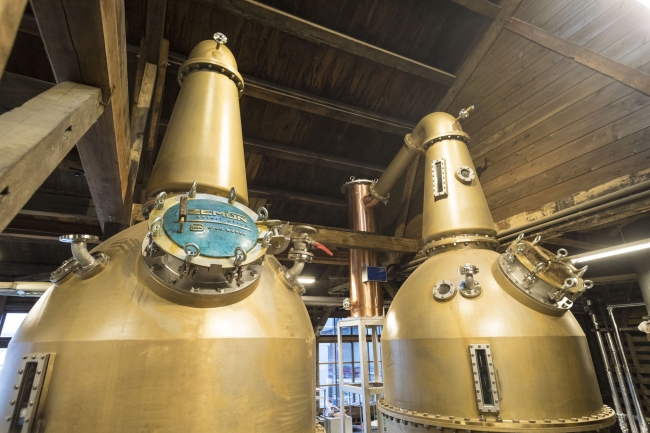The Japan Spirits & Liqueurs Makers Association has finally announced their standards for labeling Japanese Whisky. Let’s take a look at the specifics and what it means for the category.
Yesterday, the Japan Spirits & Liqueurs Makers Association — the trade union that many of Japan’s whisky makers are a part of — announced the Standards for Labeling Japanese Whisky.The long-anticipated move comes in response to a Japanese whisky category that, while wildly successful, had lacked a specific definition. Going forward, the Japan Spirits & Liqueurs Makers Association requires its members to abide by the below rules when labeling a bottle as Japanese whisky:
- Raw ingredients: Raw ingredients must be limited to malted grains, other cereal grains, and water extracted in Japan. Malted grains must always be used.
- Production: Saccharification, fermentation, and distillation must be carried out at a distillery in Japan. Alcohol content at the time of distillation must be less than 95%
- Aging: The distilled product must be poured into wooden casks not
exceeding a capacity of 700 liters and matured in Japan for a
period of at least 3 years thereafter. - Bottling: Bottling must take place only in Japan, with alcoholic strength of at least 40% as of such time.
- Other: Plain caramel coloring can be used.
Article 6 of the standard (available in English, PDF) also attempts to head off attempts to label Japanese whisky using phrases like “Nihon whisky” or “Japan whisky.” Or evoke Japanese images by using names, places, and so forth.
Will it work?
This move comes with some huge caveats. While the Japan Spirits & Liqueurs Makers Association encompasses companies like Matsui Shuzo, Suntory, Nikka, and Akkeshi, not every currently-offending company in Japan is a member. This isn’t a law. It’s a standard that companies who are members of the association need to abide by.
Further, the the rules make no mention of penalties should the rules be broken. The definition of whisky by Japan’s National Tax Agency remains unchanged.
What’s more, the standard currently features no kind of approval process or certification system for bottles of genuine Japanese whisky.
So while this is a first step, we still have a very long way to go to protecting the category.
The rules take effect on April 1, 2021, which happens to be Japanese Whisky Day. A transitional provision will allow makers to continue labeling offending products as “Japanese whisky” until March 31, 2024.
Hi there! I created and run nomunication.jp. I’ve lived in Tokyo since 2008, and I am a certified Shochu Kikisake-shi/Shochu Sommelier (焼酎唎酒師), Cocktail Professor (カクテル検定1級), and I hold Whisky Kentei Levels 3 and JW (ウイスキー検定3級・JW級). I also sit on the Executive Committees for the Tokyo Whisky & Spirits Competition and Japanese Whisky Day. Click here for more details about me and this site. Kampai!


Hi Richard. Question regarding the raw ingredient component — under the definition posted above could we get something with, say, 5% malted grain and 95% corn (aka, a bourbon)?
As far as I can see, no percentages are provided in the document… So, yes, as long as some malted grains are used, the rest could consist of, say corn. Here is the English translation of the new standards document for your convenience (link is also available embedded in the article…) :
http://www.yoshu.or.jp/statistics_legal/legal/pdf/independence_07.pdf
We’re going to need a new infographic! Your 2018 one has been very useful